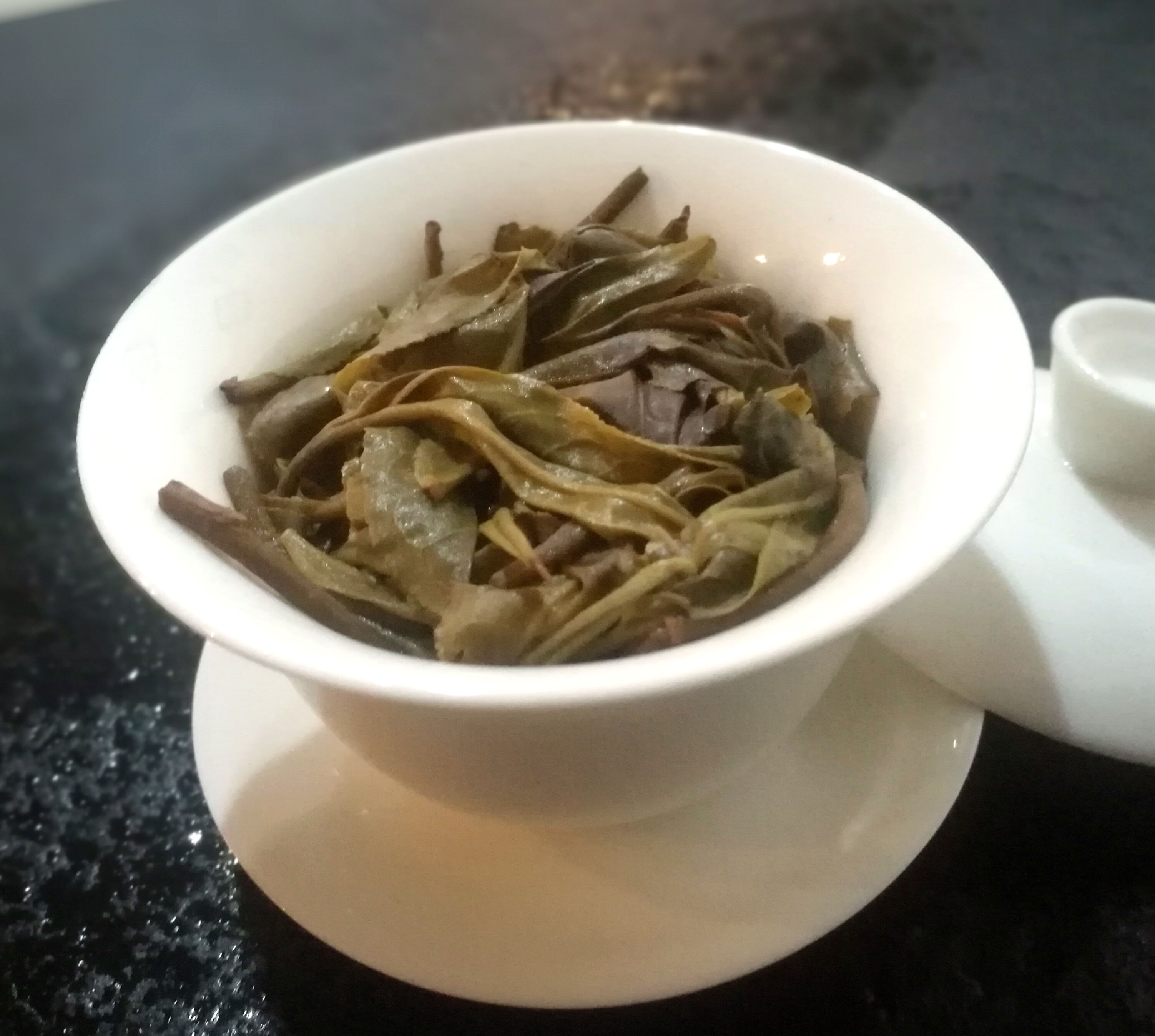A while back I saw the term ‘Wu Long’ Puer recently re-appeared on the English language internet, so I thought it worth revisiting this old topic as it comes up from time to time. I’m not sure when was the first time it was raised on the internet but I remember seeing something from maybe 2005 or 06. It seemed like it could be an appropriate coda to my previous post about processing tea and the implications for ageing.
To be clear, this is an English language term with, as far as I know, no Chinese equivalent. So it’s describing something which is described in a different way in Chinese. The idea seemed to be formulated from the perception that there was a new style of Puer tea that had been oxidised in a way that a ‘traditional’ Sheng Puer wasn’t.
The suggestion was that the tea had been rolled more (more heavily/longer?) with the effect that the tea flavour steeped out much more quickly and the tea had qualities which were reminiscent of Wulong tea.
My guess at this point is that that’s a misunderstanding. I think it’s not likely to have the effect that some folks have suggested. Rolling more heavily, rolling twice, etc. are not new, and whilst, of course, bruising the leaves more is going to break down more of the cell walls and may well result in more oxidation, I somehow doubt it would produce the effect talked about.
If anything, over the last ten years or so, there has been a trend toward lighter rolling, 抛跳/pao tiao, rather than tighter, originally driven, it seems, by Taiwanese demand. People coming to Yunnan and demanding tea that was rolled in a way that they thought looked better. Some tea farmers have told me that Taiwanese customers wanted them to roll straight – backwards and forwards – as opposed to a circular motion to create rolled leaves that were more needle shaped. Less twisted. This is not standard Puer fare. Traditionally, if anything, people rolled tea more tightly pre 2000s, so this doesn’t easily fit with the proposition that post 2000s Puer was rolled more, creating an ‘Wu Long’ type flavour/aroma.
At least, if additional or heavier rolling is a factor, it’s more likely that any extra rolling in tandem with other factors produced the result talked about. Sure, it’s difficult, I haven’t drunk the tea that someone else drank that made them think it had been ‘wulonged’, but the variables in tea making are not infinite.
Another factor with heavier rolling is that the flavours will be steeped out more quickly, so the tea will be less ‘nai pao’ / 耐泡 and the flavour in the early steeps more intense. This is also another reason why there has been a trend to lighter rolling: to make early steeps less intense and to have the tea steep more slowly.
Of course, if other things are done in the processing of Puer, to reduce bitterness and astringency for example, then heavier rolling is not going to produce such a marked effect, and the tea will generally have poorer structure, and steepability.
The only time I have heard a term in Chinese which I would say is referring to the same thing was many years ago when someone referred to a raw Puer as ‘fa jiao cha’/发酵茶/fermented tea. As now, the understanding was that it was tea that had been processed in such a way as to cause it to ferment in a way similar to other types of fermented tea: Wu Long, black tea, etc. and not proper Puer processing.
But even fairly excessive wilting – with autumn tea this is not that uncommon, where the tea is picked in the afternoon and then left overnight to be fired early the next morning – if the tea leaves are piled at a correct depth, it will not on its own produce an ‘Wu Long’ kind of fermentation. So it seems that it’s more likely a combination of factors of which excessive wilting may be a part.
One thing that can cause a light ‘fermented’ aroma is if the sha qing is not done well, or a combination of tan qing and sha qing are not managed properly, which can result in the stems of the tea leaves, which typically have more moisture in them, not being ‘fired’ properly, and enzyme activity not being arrested sufficiently. The result being that once the tea comes out of the pan it continues to ferment, producing an aroma in the dry tea that is reminiscent of a fermented tea -‘hong shu wei/红薯味/sweet potato taste, as some people call it. Personally, I wouldn’t think it was similar to Wulong, but who knows.


